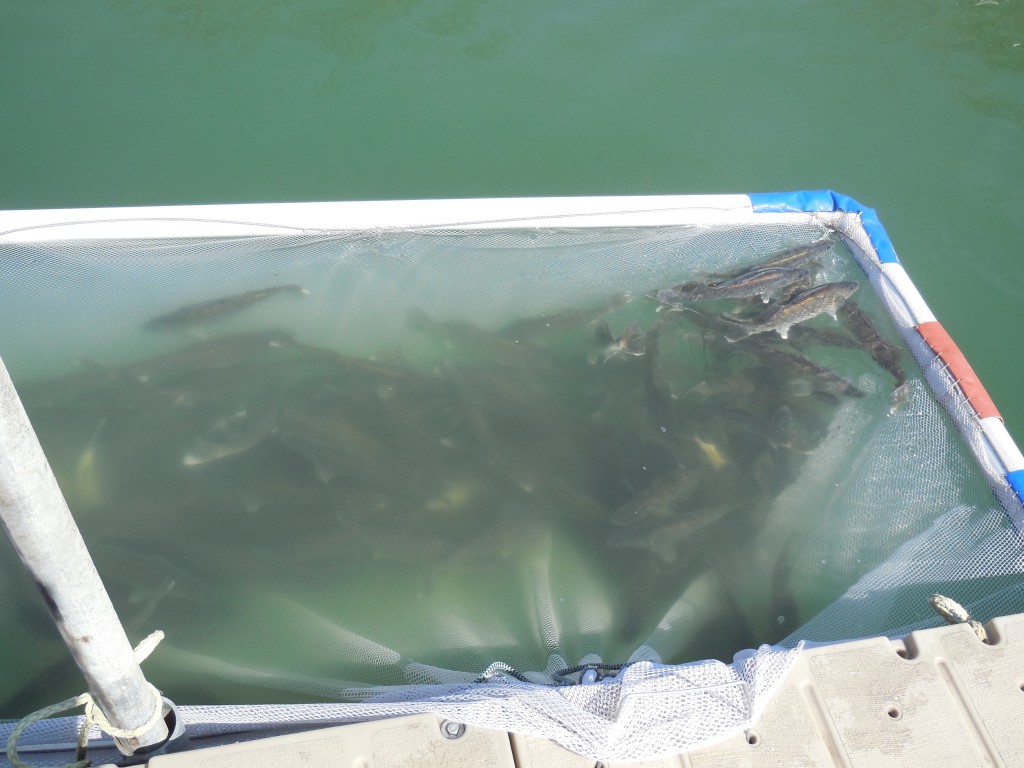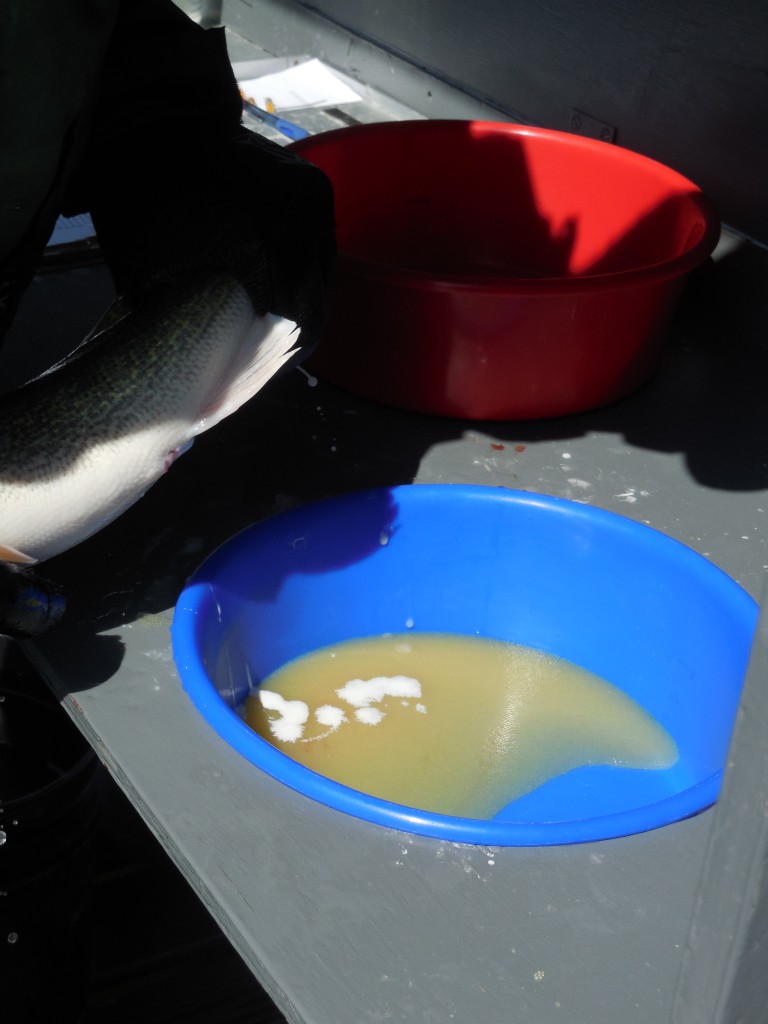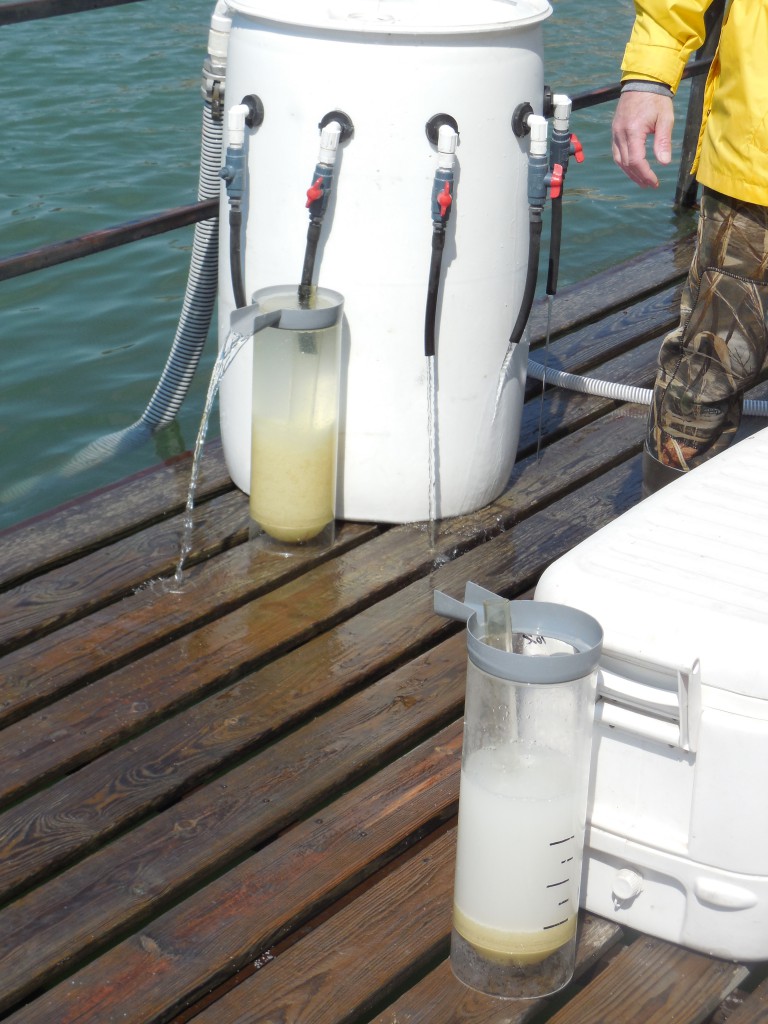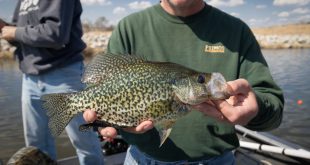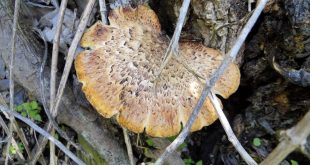I have to admit that my job duties have evolved over the years. I do not get out to do a lot of field work anymore. Most of my “field work” is done with a fishing rod in hand while I am off duty. Every spring Fisheries Division employees are very busy with collecting fish and eggs, stocking fish, etc. etc. Spring is one of the busiest times of the year. Many of those efforts take extra man-power and it is “all hands on deck”. So, for the first time in a few years, I was able to get out to Sherman Reservoir this spring to help with the collection of walleye eggs.
I have blogged before about the walleye egg collection efforts that are done every spring. In short, we collect walleye eggs in order to produce the walleyes that will be stocked all around Nebraska. If you missed it, there is an excellent story in the April issue of NEBRASKAland on our walleye egg collection efforts, The Life of ‘Eye. Also, here is a video that will give you an idea of what is involved:
I was out to Sherman for a couple of nights to help net adult walleyes, and I stuck around in the mornings to help with the egg collections. Our Fisheries crews took walleye eggs primarily from Sherman and Merritt reservoirs this spring; also took a few eggs later from McConaughy. The eggs from McConaughy were taken a week later as that gives us some flexibility in the timing and raising of those fish–it is better if all the eggs we collect do not hatch at the same time.
Walleyes spawn mostly at night, and if you want to capture those spawners you have to stay up most of the night. I am getting old. I discovered the night crews were all equipped with lights, depth-finders and GPS units, which I had used during past walleye spawns, but they also had smart phones to check the weather radar and play tunes. They even had wireless speakers on the boat! All of that seems like a luxury, but at 2:00 in the morning, on the third run of the nets for the night, cranking up some tunes gets the crew motivated! In the Air Tonight by Phil Collins is a good walleye-spawning theme song.
We captured female walleyes in large-mesh gill nets set for about an hour at a time. When working on a night crew running those nets, it is pretty much get the fish in, get them untangled as quickly as possible and into the live well. It is wet work, work, work under whatever conditions the weather happens to throw at you. But there is time for a hero shot or two.
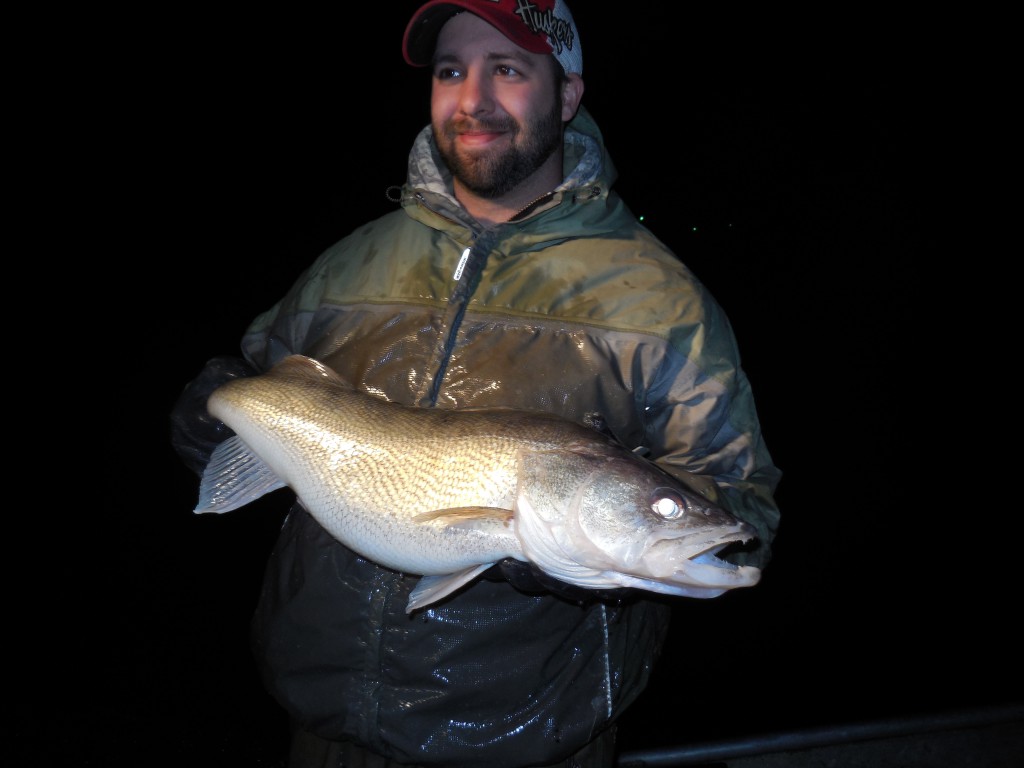
Male walleyes also are collected at night primarily by electro-fishing boat. Fish are “cribbed” in holding nets until the next morning. Males in one crib:
Big girls in another crib:
The walleye population in Sherman is very healthy, I handled dozens of 24-25-inch female walleye. The second night I worked we had to dodge some lightning, but the walleyes moved even more and the bigger fish came out. We saw a lot of 28-30 inch female walleyes that night.
In the mornings additional Fisheries staff shows up to sort through the fish collected during the night and spawn those that are ready. Spawning is done in a pan, one female per pan, and then 3 males for each pan/female. There are more than enough sperm in a single drop of milt from one of the male walleyes, but we want fertilization to be as high as possible so we use three males. I hope this picture is self-explanatory (if not, ask your parents about the “birds and the bees”).
Care is taken to keep the pan, the female and males as dry as possible while eggs and milt are expressed. That seems odd, because, well, they are fish and they spawn in the water. However, remember our goal is the highest rate of fertilization possible and that can be accomplished by keeping the eggs and milt dry, and then mixing them thoroughly. The 3rd primary feather from a 2-year old Tom turkey is critical for proper stirring and fertilization. Oh, and only stir in a clockwise direction!
Once the eggs and milt are stirred, THEN water is added. Water activates the sperm. By keeping everything as dry as possible until the eggs and milt have been thoroughly mixed, we can get the highest rate of fertilization possible!
Once the “magic in the pan” is done, a slurry of clay is added to the walleye eggs. Again, that sounds like the worse possible thing that could be done to those freshly fertilized eggs, but there is a method to a pointy-headed fish biologist/culturist madness. The clay is very fine, “Fuller’s earth” or “diatomaceous earth” and those fine clay particles coat the walleye eggs and keep them from clumping together. If they clump they do not circulate properly, and then fungus starts growing and all sorts of bad things happen. Here is a jar full of walleye eggs on the right with the clay slurry, the jar on the left is being rinsed.
When rinsing is done, the eggs are put in large coolers to be hauled back to the hatchery.

The day crew, the squeezing crew (the males and females are gently squeezed to express the milt and eggs), may not work all night, but they also work hard to get as many eggs as possible collected in the shortest amount of time. A little shelter makes the work a little easier and protects the eggs from some of the elements.
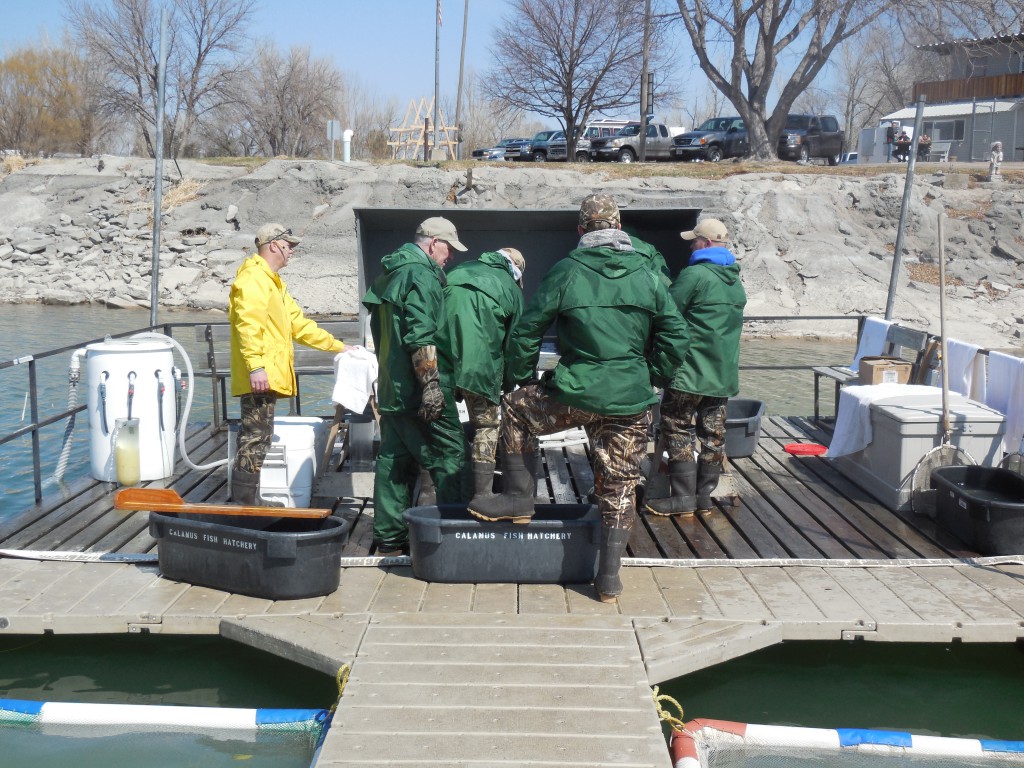 On the second morning I was at Sherman, the guys started squeezing fish by 8:00 or 9:00 in the morning and we did not finish until about 3:00 that afternoon. The walleyes were running and we had caught a lot of fish the night before. I am not sure of the final count that day, but I am guessing we collected over 100 quarts of eggs.
On the second morning I was at Sherman, the guys started squeezing fish by 8:00 or 9:00 in the morning and we did not finish until about 3:00 that afternoon. The walleyes were running and we had caught a lot of fish the night before. I am not sure of the final count that day, but I am guessing we collected over 100 quarts of eggs.
Again, it is “work, work, work”, but who can resist a “photo op” with a big walleye?
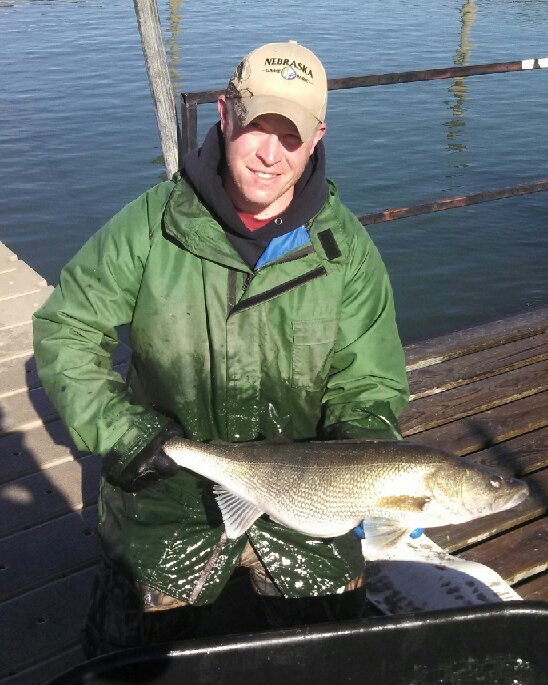
Once the fertilized eggs are hauled back to the hatchery, they are jarred up in jars exactly like those pictured above. The walleye eggs roll, circulate, in those specially-made hatching jars for a period of days, usually around 10-14, depending on water temperatures, until they hatch.
We had a goal of 500 quarts of walleye eggs this spring. We easily met that goal with the eggs collected from Sherman, Merritt and a few from McConaughy. Nebraska fisheries biologists have requested over 29 million walleye for stocking in waters all around the state this year and with the efforts of the crews this spring, and thanks to the cooperation of the walleyes, we should have no problem meeting those requests. Nebraska’s walleye fisheries, and walleye anglers, benefit immensely from these efforts every spring.
 Nebraskaland Magazine
Nebraskaland Magazine
